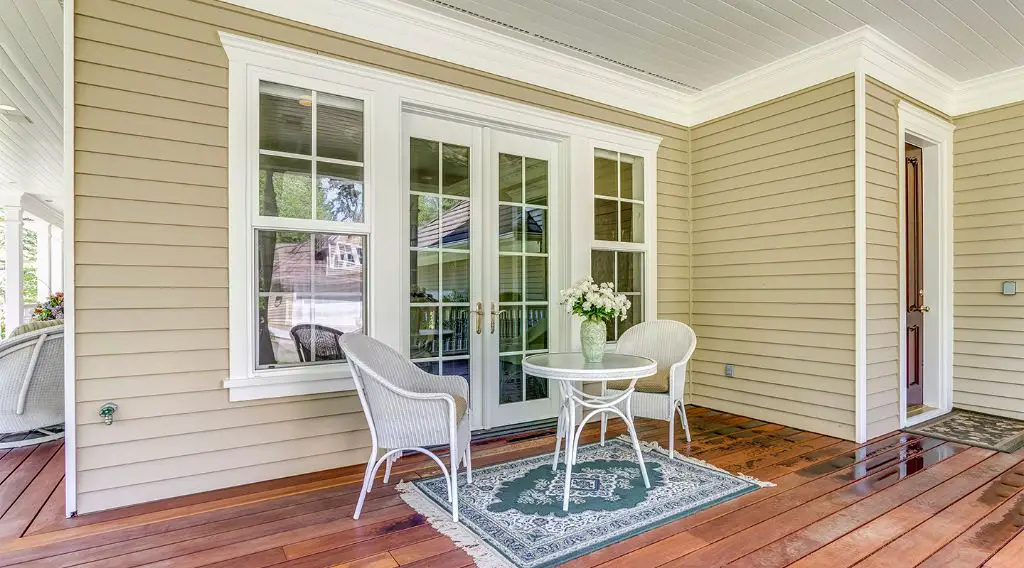When it comes to home design and decoration, one of the most common questions homeowners ask is whether their window trim should match the trim on the rest of the house. There are arguments on both sides of this debate, with pros and cons to matching or contrasting your window and door trim with the rest of your home’s architectural details.
Page Contents
Quick Answer
The quick answer is that it’s largely a matter of personal preference whether you match or don’t match your window and door trim to your house trim. While some designers argue that matching trim makes a home look more cohesive and “finished,” others make the case that contrasting trim can add visual interest and dimension. At the end of the day, it comes down to your own sense of style and aesthetics.
The Case for Matching Trim
Here are some of the main reasons why homeowners and designers often recommend matching window, door, and house trim:
- It creates a unified, consistent look.
- Matching trim can make a home look more elegant and upscale.
- It’s easier to touch up trim if it all matches and uses the same paint color.
- Mixing different trim styles can look busy or haphazard.
Many interior designers argue that matching trim gives a house a more polished, “designer” look. Going with the same trim profile and color throughout makes the home look well-planned and intentional in its design choices.
The Case for Contrasting Trim
On the other side of the debate, here are some of the benefits cited for using different trim on windows versus the rest of the exterior:
- It creates visual interest and dimension.
- Contrasting trim can emphasize special architectural features.
- It allows you to get creative and highlight different styles.
- Mixing historical and modern trim profiles can add character.
Those in favor of contrasting trim believe it offers more opportunities for self-expression. Distinguishing window and door trim from other exterior details allows you to get creative and develop a more unique look and feel for your home’s facade.
Factors to Consider
When deciding whether to match or contrast your trim, here are some factors to take into account:
- Architectural style – Formal styles like Colonial and Tudor often look best with matching trim, while more eclectic homes can pull off contrasting colors and profiles.
- Existing trim – If your window trim is in good shape, matching new trim to it could save time and money.
- Color scheme – Contrasting works best if colors complement each other versus clashing.
- Budget – Updating just the window trim is often more affordable than re-trimming the entire house.
- Personal preference – At the end of the day, choose the look you find most aesthetically pleasing.
Tips for Matching Trim
If you opt to match your interior and exterior trim, here are some tips:
- Use the same style – e.g. flat, rounded, or ornate.
- Match widths and dimensions as closely as possible.
- Opt for the same construction materials like wood or PVC.
- Use identical paint colors or stains.
- Replace any trim that doesn’t match.
Pay close attention to details like corners, edges, thickness, and decorative grooves or patterns. Even small inconsistencies in matched trim can be visually obvious.
Trim Matching Tips By Location
| Location | Matching Tips |
|---|---|
| Windows | Use identical trim profiles around all window frames and casings. |
| Doors | Door trim should match window and corner trim profiles. |
| Corners | Trim boards at corners and eaves should precisely match other exterior trim. |
| Soffits | Soffit trim boards should match dimensions and materials of adjacent trim. |
Tips for Contrasting Trim
If you want to mix up your trim, these tips can create a cohesive look:
- Use colors in the same palette – analogous or complementary hues.
- Repeat profiles on opposite sides of openings.
- Tie different trim styles together with other design elements like shutters.
- Make bolder trim choices on less visible areas like side and back windows.
The goal is to avoid an overly busy or disjointed look. Repeat elements and colors to make contrasting trim tie together despite differences.
Pairing Contrasting Trim Materials
| Trim 1 | Trim 2 |
|---|---|
| Wood | PVC |
| Stained cedar | Painted pine |
| Composite | Vinyl |
| Wrought iron | Fiberglass |
Mixing materials like wood, PVC, and metal can add diverse textures and visual styles.
Conclusion
At the end of the day, the choice between matching or contrasting window and door trim with your home’s other exterior trim comes down to personal preference. While matching trim can give a more unified, upscale look, contrasting trim offers creativity and dimension. Factor in your home’s architecture, existing details, color scheme, and budget to make the decision that fits your vision best. And don’t be afraid to get creative and have fun with trim to add your own personalized flair!
